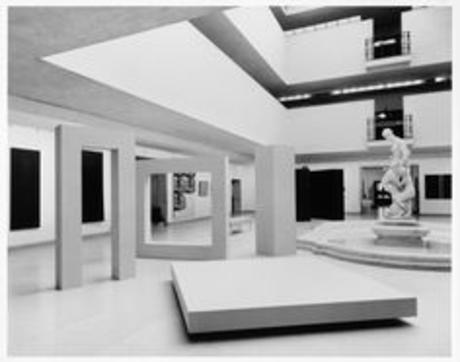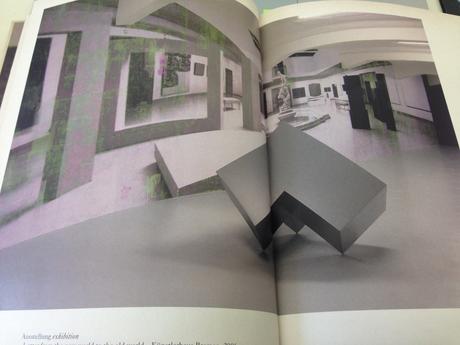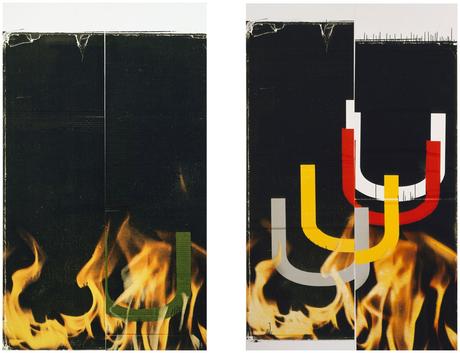Julie Rafalski
Black, White and Grey
In Simon Dybbroe Møller's work Black, White and Grey (Cyan, Magenta and Yellow), a photograph of an exhibition that took place in 1964 was blown up to a length of 21 metres and used as wallpaper. The exhibition referred to was Black, White and Grey, an historic minimalist which showed works of Robert Morris, Sol LeWitt and Dan Flavin, among others.

Exhibition view of Black, White and Grey
In Dybbroe Møller's piece, the wallpaper was created by using a digital printer using only the colours cyan, magenta and yellow, underscoring the fact that today's technology can print a black and white image using only those three colours.

Simon Dybbroe Møller, Exhibition view with Black, White and Grey (Cyan, Magenta and Yellow)
Dybbroe Møller explains in an interview that the work came about with his thinking of how black and white art reproductions in books were sometimes the only way of seeing an artwork. Minimalism's rise was partly due to art reproductions circulating in books and magazines at the time.
Dybbroe Møller also speaks of the idea of technological progress and how each technology has built-in 'mistakes' or limitations. In his wallpaper, the digital ink jet printing produces colour bleeds of cyan, magenta and yellow. The pasting of the wallpaper to the wall with glue has added another layer to the image- the greenish gestural marks on top, which almost look like static of a poor video connection.
His work is an image of the past, but one that underscores the media through which we view this image (the wallpaper sections, the imperfect ink jet printing and the gestures of glue). The process of the work gets in the way of the image. The production of the image interrupts its presentation.
The work also creates a tromp l'oeil effect - one wall opens out to the space of the minimalist show so that the viewers are actually looking into the historical past.
This piece reminds me of work of Wayde Guyton who often uses ink jet printers and their limitations to print onto canvases which look like they have been painted. The misfeeds of the canvas into the machine are recorded onto the canvas itself, creating a sort of timeline of the works journey through the printer. The way something is made becomes part of the content. The production process becomes the content.

Wade Guyton, Untitled, Fire, 2006
